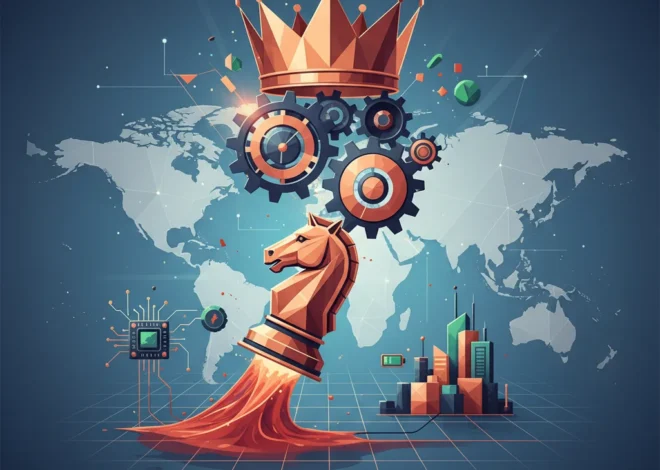
Stuck in First Gear: An Investor’s Analysis of the Luxury EV Slowdown
The Electric Dream Hits a Red Light
The electric vehicle (EV) revolution was heralded as an unstoppable force, a paradigm shift set to redefine personal transportation and supercharge the portfolios of savvy investors. At the forefront of this charge were the luxury automakers—the Porsches, Mercedes-Benzes, and Audis of the world—promising a seamless fusion of high-performance engineering and zero-emission technology. Yet, despite the initial fanfare, the reality on the ground paints a different picture. The high-end EV market, once seen as the natural entry point for electrification, is sputtering. Sales are sluggish, inventory is piling up, and executives are publicly tempering expectations.
This isn’t just a problem for car enthusiasts; it’s a critical signal for anyone involved in finance, investing, or tracking the health of the global economy. The slowdown in the luxury EV segment reveals deep-seated challenges related to consumer psychology, global market dynamics, and fundamental business economics. Why are affluent buyers, the very demographic seemingly best equipped to afford a premium EV, hesitating? The answer lies in a complex interplay of prohibitive pricing and a dramatic power shift in the world’s most important automotive market: China.
The Sticker Shock That’s Stalling Sales
The most immediate and significant hurdle for luxury EVs is the staggering price premium over their internal combustion engine (ICE) counterparts. While early adopters were willing to pay a premium for novelty and performance, the mainstream luxury buyer operates on a more traditional value-for-money calculation, even at six-figure price points. When a brand’s first foray into the electric space costs significantly more than its established, beloved gasoline-powered equivalent, the purchasing decision becomes a difficult exercise in financial justification.
Porsche, a brand synonymous with performance and prestige, provides a stark example. The Porsche Taycan, a technological marvel, has struggled to match the sales momentum of its internal combustion sibling, the Panamera. According to a detailed analysis by the Financial Times, this trend is not unique to Porsche. Across the board, legacy automakers are discovering that brand loyalty alone isn’t enough to convince customers to absorb the “EV tax.” This has profound implications for their stock market valuations and long-term profitability strategies.
Let’s break down the financial disconnect for a potential buyer comparing flagship models from a legacy luxury brand:
| Factor | Luxury Electric Vehicle (e.g., Mercedes EQS) | Luxury ICE Vehicle (e.g., Mercedes S-Class) |
|---|---|---|
| Upfront Cost | Often 15-25% higher than the comparable ICE model. | Lower initial capital outlay, established pricing structure. |
| Perceived Value | Instant torque, quiet ride, tech-forward image. | Proven reliability, brand heritage, familiar driving dynamics. |
| Long-Term Costs | Lower “fuel” and maintenance costs, but high battery replacement risk. | Predictable (though higher) fuel and maintenance costs. |
| Depreciation | High uncertainty due to rapid advancements in battery financial technology. | More established and predictable depreciation curves. |
For an investor, this table highlights the risk. The rapid pace of innovation in battery technology means today’s cutting-edge EV could be technologically obsolete in five years, cratering its resale value. This uncertainty is a major deterrent for buyers who view their vehicle as an asset. The entire financial model of luxury car ownership is being tested, and the EV segment is currently on the losing end of that equation.
The Great Wall of China: A Market Lost in Translation
If high prices are a headwind in Europe and North America, the situation in China is a perfect storm. China is not just the world’s largest EV market; it’s the most competitive and technologically advanced. For decades, Western brands like BMW, Mercedes, and Audi dominated China’s luxury car scene. That dominance is now evaporating in the electric era.
The reason is twofold. First, a wave of domestic competitors like BYD, Nio, and Xpeng are producing high-quality, tech-laden EVs at a fraction of the cost. They are not just competing on price; they are out-innovating the legacy giants on features that matter most to Chinese consumers. This includes sophisticated in-car infotainment systems, seamless integration with local apps like WeChat, and advanced driver-assistance systems tailored for dense urban environments. As noted in the FT’s report, sales of premium German EV brands in China have been disappointingly sluggish.
Second, there’s a cultural shift. Chinese consumers increasingly favor domestic brands, viewing them as symbols of national technological prowess. The prestige once automatically conferred by a German badge is no longer a guaranteed sales driver. For a global automaker, failing in China is not an option—it’s a catastrophic blow to their entire EV strategy and a major red flag for those investing in their stock.
My prediction? We’re on the cusp of a major shakeout. The current strategy of simply putting a battery in a familiar chassis and charging a premium for the badge is failing. The winners in the next decade will be the companies—whether legacy or startup—that can master the digital-first mindset. This involves rethinking everything from in-car operating systems to innovative ownership models. Look for a rise in subscription services and new fintech solutions like “battery-as-a-service” that separate the cost of the battery from the car, drastically lowering the upfront price and solving the depreciation problem. This is where the future of automotive finance is headed, and the brands that adapt will thrive.
Rethinking the Value Proposition for the Affluent Buyer
Beyond price and market dynamics, there’s a more philosophical issue at play: what is the unique selling proposition of a luxury EV? The traditional pillars of luxury—craftsmanship, engine sound, mechanical feel, and heritage—are muted or absent in an electric car. While the blistering, silent acceleration of an EV is impressive, it’s also becoming a commodity. A high-end Tesla offers similar straight-line performance to a Porsche Taycan for significantly less money.
This forces luxury brands into a difficult position. They must redefine what “luxury” means in an electric context. Is it sustainable materials? Hyper-personalized software? Or exclusive access to a high-speed charging network? The answer is still unclear, and this ambiguity is contributing to buyer hesitation. In the world of high-stakes trading and investment, ambiguity translates to risk. The sluggish demand is a clear signal that the value proposition has not yet been successfully communicated to the target audience.
Digital Dollars, Analog Banks: The Hidden Forces Stalling America's Financial Future
An Investor’s Roadmap: Navigating the Bumps Ahead
For investors, finance professionals, and business leaders, the luxury EV slowdown offers several crucial takeaways. This isn’t a signal to abandon the EV sector, but a call for a more nuanced and critical approach.
- Scrutinize Global Strategy: Don’t just look at a company’s total EV sales. Dig into the geographic breakdown. Success in Europe can be completely negated by failure in China. A company’s China strategy is a primary indicator of its long-term viability.
- Watch the Margins, Not Just the Hype: Are companies protecting their profit margins, or are they being forced into a price war they can’t win? The pressure to discount expensive EVs to move inventory is immense and can erode the profitability that underpins a healthy stock market valuation.
- Differentiate Between Technology and Branding: Acknowledge that the companies with the best brand heritage may not have the best technology. The long-term winners will be those who can successfully merge the two. Pay close attention to investments in software development and battery R&D.
- Consider the Broader Economic Context: High interest rates, managed by central banking institutions, make financing expensive vehicles more difficult for consumers and raise the cost of capital for automakers. A volatile global economy can quickly dampen demand for high-ticket discretionary items like luxury cars.
The road to an all-electric future is proving to be longer and more winding than anticipated, especially at the premium end of the market. The dream of a smooth, rapid transition has been replaced by the harsh reality of fierce competition, consumer price sensitivity, and the complex challenge of redefining a century of automotive branding. The luxury EV market is not in reverse, but it is undeniably stuck in first gear. For investors, the key is not to get out of the car, but to understand the terrain ahead and adjust their strategy for the long journey.
The Business of Snow: Uncovering Investment Slopes in the 2025 Winter Sports Economy


